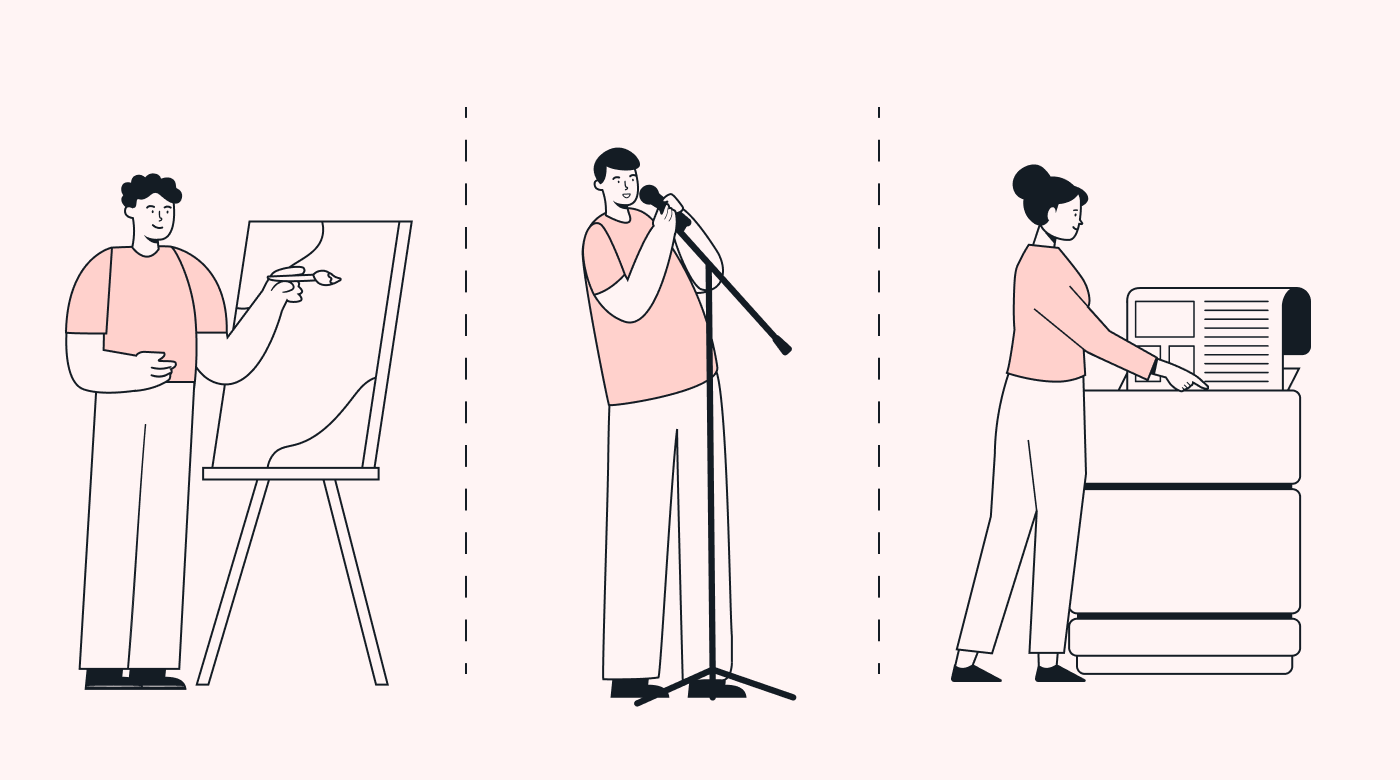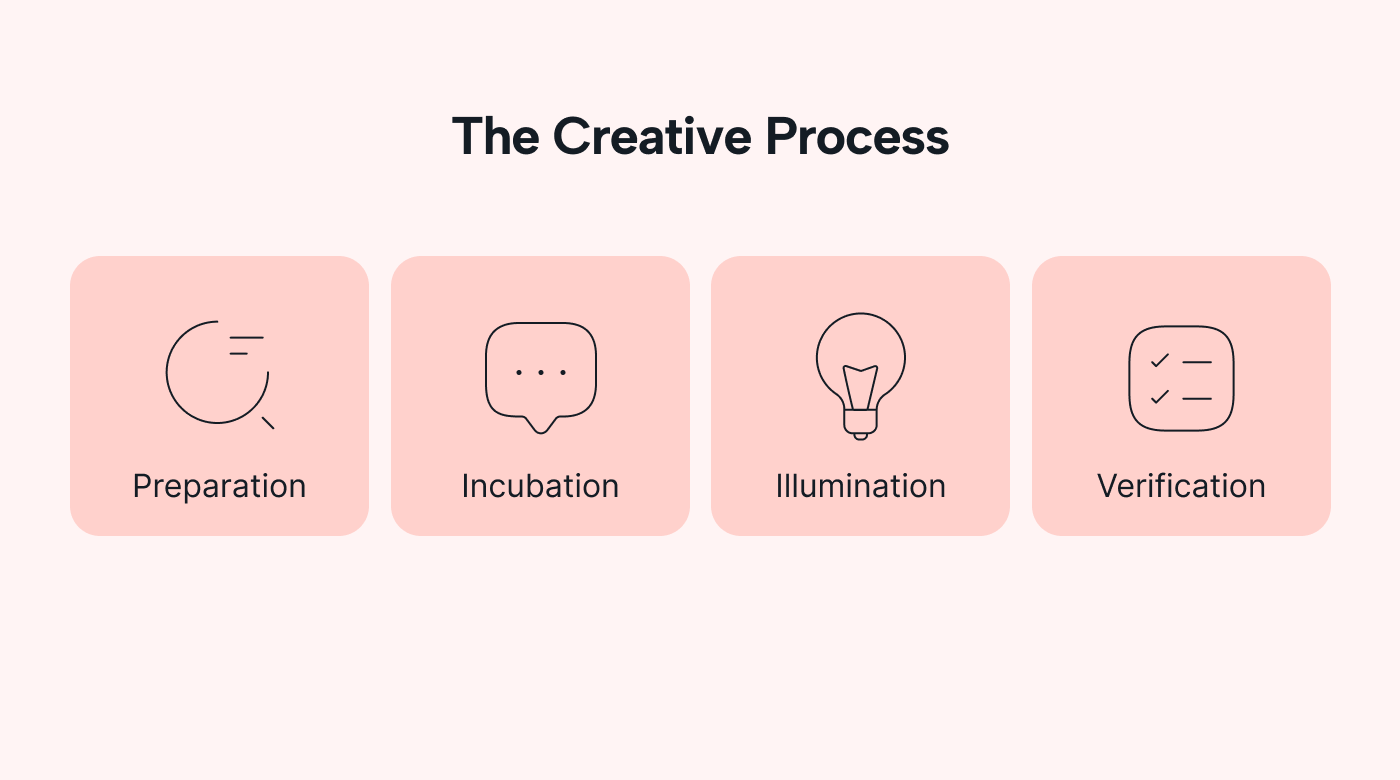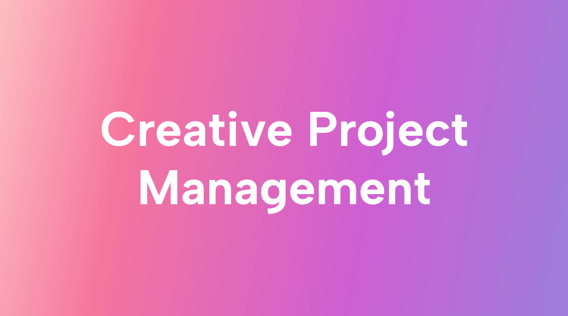Managing a project has been described as herding cats. And it's the same for creative project management, albeit with a herd of feral cats. The additional challenges of a creative project lie largely in the timing of things.
In traditional project management, you usually deal with structured tasks that are repeated often and take about the same time to complete. And when the task is done, the deliverable either works or doesn’t.
A creative project is different because you can’t easily turn the inspiration to create on and off. This makes it more difficult to predict how long a task will take, which can create havoc for any task dependencies that may be in play.
As for deadlines, the famed author Douglas Adams had thoughts about them that were published posthumously in Salmon of Doubt:
“I love deadlines. I love the whooshing noise they make as they go by.”
That comment will resonate with creative people but not their managers.
By way of example
Imagine that you wanted to create a brilliant marketing campaign or advertisement for your business. Let’s look at this in more detail: Are we doing a print advert? An online advert? An audio advert? A video advert? Or something for more than one media format?
To keep it simple, let’s look at a print advert for a billboard:
- We need a target market or goal. Then, we must figure out how we can achieve that objective.
- We must work out who can do this job for us and maybe build a team.
- We must explain what we’re trying to achieve and let the creative team get on with it.
If this all sounds a bit like a project, that’s because it is one. But the money question is: How long will all of this take? Well, if left entirely up to the creative team, the words of renowned author John McPhee sum it up succinctly: it takes as long as it takes.
Working with a creative team
A creative team is usually made up of designers, artists, writers, marketers, and other creative professionals. They'd work together to come up with and develop creative ideas.
You’d probably need at least one copywriter, a graphic artist, and a designer for your billboard. After you brief them on the project goals, the writer would string words together, the artist would create artwork, and the designer would put them together. They’d collaborate often, feeding off each other’s ideas, which could go on forever.
 |
That’s where your creative project manager comes in: they need to keep the project on track, within budget, and deliver something on time. Remember that billboards are booked in advance, and you pay for each day. You must get it designed, approved, and into production before you can hang it.
Creating an effective team structure
Just like traditional projects, creative projects need an effective team structure. Part of that lies in your project management tools. You'll use those to monitor and control the project.
On design projects, these tools must have two really important features: they must be flexible and include artificial intelligence so that changes in one area are automatically reflected in the schedule or priorities.
And, where traditional projects will have a testing phase, creative projects must have a proofing and approval process. Time-tracking is important but not critical because creative people are usually measured on output more than how long it took to create something.
Defining different roles in the team
The team structure must be more fluid and flexible on a creative project. It works best in a flat and dynamic structure where only the creative project manager has any seniority. And that’s used primarily for resolving disputes between creative team members.
The adaptability allows different team members from a wide range of disciplines and backgrounds to collaborate more effectively. Of course, this also means that communication is critical for setting meetings and sharing the decisions afterward.
Communication really is key
Building a successful team environment means using the strategies you’d find in a creative agency. These strategies foster clear communication and collaboration and allow you to complete your project successfully.
A good creative project manager establishes channels and guidelines for the team to communicate effectively. This must include regular team meetings, project-specific communication tools, and clear project goals, expectations, and project timelines.
Feedback is another important strategy. You need to create a safe space for team members to share their thoughts, ideas, and concerns. Looking for and valuing feedback encourages an open dialogue. This ensures everyone’s input is considered, and they all know it’s considered.
 |
You should recognize and highlight each team member’s unique skills and expertise. It boosts team morale and fosters a sense of empowerment. That can only ever result in increased creativity and productivity. It also inspires your team to push the boundaries and find innovative solutions.
The creative process
The creative process is a dynamic, step-by-step journey that sometimes transforms fanciful ideas into real outcomes. But it usually involves more than one person. Great creativity often comes from collaborative thinking and dynamic workflow between people with different skills and perspectives.
It’s also not linear. It’s a series of interconnected steps that adapt and evolve as the project unfolds. You must understand and nurture this process to be an effective creative project manager. You must also allow for flexibility, experimentation, and open communication.
Four steps to success
It may be almost 100 years old, but Graham Wallas’ four-stage process still provides a pretty solid understanding of the creative process. As outlined in his book, The Art of Thought, the fundamental idea involves preparation, incubation, illumination, and verification.
Managing this process adapts from the beginning to the end of a project. From first contact to creative signoff, it plays a different role at each step. The four stages offer a logical and easy way to break down the lifecycle of your creative project.
Most importantly, your creative project’s success relies on following the same steps as a traditional project. In other words, it must move through initiation, planning, execution, monitoring and control, and signoff.
Tools to streamline the process
As with anything, the right tools can make all the difference. And a whole new class of software is now available for this niche. Creative project management software provides the dynamism and flexibility you need. It also offers the standard project management tools to help you make a success of your creative projects.
Motion’s powerful AI calendar and task manager are great examples of this. This online tool will automatically schedule your creative team’s time based on deadlines, dependencies, and priorities you set. It’ll also manage and change those schedules as the conditions change.
So, you want to be a creative project manager?
Managing a traditional project can be difficult, but overseeing a creative agency or project is on a whole other level. It takes a person with a special skill set. You need to appreciate the complexities of creative projects and clearly understand the many challenges creative teams face.
 |
What it takes to be a creative project manager
If you’re going to manage a creative agency or project team, you’ll have to be ready to give a lot of support and guidance to your team. You need to be skilled in resource allocation and time management, and you must be a brilliant communicator.
Roles and responsibilities
Being a creative project manager is a balancing act. You need to weigh creativity against traditional project management principles and find a happy medium.
It's true that your main responsibility is to manage the project lifecycle, from idea to delivery. But, at the same time, you must meet project goals along the way, make sure that tasks are completed, that deadlines are met, and that you stay within the project budget.
To do this, you'll need to:
- Manage the creative team and project stakeholders
- Coordinate project deliverables
- Oversee the development of those deliverables
- Manage task assignments
- Promote effective communication and collaboration within the team
Only by fulfilling these responsibilities will you be able to complete your creative projects and achieve the desired outcomes successfully.
Challenges of a creative project manager
Being a creative project manager comes with its fair share of challenges. A critical aspect of this role is clearly defining the product or project scope. In other words, what exactly must be done to achieve the project’s goals?
If that sounds simple, it really isn’t because clearly defining the product is only the start. You must also set firm deadlines, manage the many varied roles, deal with different personalities, and keep a sharp eye that team members aren’t straying beyond the project scope.
Moving up the food chain
If you’re a creative person moving up to a creative project management role, you’ll probably have to brush up on your administrative skills. Or you could let technology do all the donkey work for you. You could then put all your energy into managing the people and getting them to play nicely together.
But your biggest challenge is that you’ll probably understand your team members and be willing to empathize with them just a little too much. That could lead to their not taking you as seriously as they should and it could become a difficult situation. You’ll have to play bad cop sometimes.
And while that can be quite tricky, it’s nothing compared to the challenges facing a traditional project manager coming across to the creative world.
Making the transition
In the traditional project management world, project managers can be very domineering and inflexible. In extreme cases, they may even say things like: “If I want your opinion, I’ll give it to you.”
That approach will go absolutely nowhere with creative people. In fact, it could jeopardize the entire project. That’s because creatives are very different from those who work on traditional projects. Usefully, Canva has explained in detail, but here are ten things that highly creative people do differently:
- They create a custom work routine and stick with it
- They can recognize their worst work, not just their best
- They have a healthy appetite for new experiences
- They know what they don’t like
- They take risks, and they fail
- They aren’t afraid to daydream
- They take in the world around them
- They have confidence
- They aren’t afraid to ask questions
- They follow their dreams
The message for traditional project managers is clear: If you want to make a career in creative project management, lose the attitude, embrace a flat management structure, and focus on building a team culture.
It’ll definitely help to embrace your own creativity. Science has proven conclusively that humans, as a species, are wired to create. Scott Barry Kaufman and Carolyn Gregoire explore that built-in creativity in their book Wired to Create: Unraveling the Mysteries of the Creative Mind.
Usefully, they’ve also summarized and updated the book’s key points in an article for the University of California at Berkeley’s The Greater Good Science Center. Ten Habits of Highly Creative People explains that creativity is multifaceted and can be displayed in many different ways.
You’ll need to bring your empathy to work with you to succeed in a creative space. Creative people are most creative and productive when they feel free to fly. It doesn’t matter if they aren’t that free, just that they feel free.
How technology helps your creative project manager
A good creative project manager is a strong leader, has excellent communication skills, and can handle complex projects. Technology helps you a lot in these areas.
For example, and as noted above, Motion's AI-powered calendar and task manager can help your projects to succeed. It does so by helping you guide the team, communicate effectively with them, manage the complexities, and build a collaborative and inclusive work environment.
That technology can save you time and give you a 13-month year to play with. Now, who couldn’t use that? Sign up today for Motion’s seven-day free trial.





